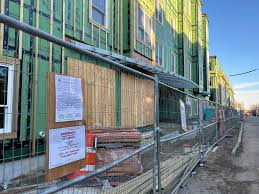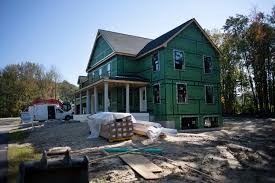
AUGUSTA, Maine — In an effort to address the state’s deepening housing crisis, Maine lawmakers passed a series of sweeping measures this session aimed at making it easier — and faster — to build affordable housing across the state.

Driven by a sharp rise in rental prices and an urgent need for more housing units, the new laws cut red tape, streamline construction, and create Maine’s first steady funding source for affordable housing — measures that advocates say are crucial steps in a state where a two-bedroom apartment now requires nearly $60,000 in annual income to afford without being rent-burdened.
“This report confirms what we hear every day — working folks simply cannot keep a roof over their heads without multiple full-time jobs,” said Laura Mitchell, executive director of the Maine Affordable Housing Coalition.
A recent National Low Income Housing Coalition report shows the fair market rent for a two-bedroom apartment in Maine has climbed to $1,478 a month. For minimum-wage earners at $14.65/hour, that means clocking nearly 80 hours a week just to cover rent and utilities — an impossible ask for many working families.
Lawmakers across party lines agreed that the status quo is no longer sustainable.
“These numbers reinforce the urgent need for bold policy solutions that cut the red tape so housing is easier to build, and the dire need for funding to build homes that are affordable statewide,” Mitchell said.
House Speaker Ryan Fecteau (D-Biddeford) — a vocal champion of housing reform — emphasized that momentum is building.
“We are in a moment where Republicans and Democrats are seeing the issue of housing as one that requires immediate action and is impacting not just southern Maine, but really every corner,” Fecteau said. “Maine has made some of the most substantial progress to tackle the housing crisis in the last five or six years than any other state.”
One standout reform is LD 1082, Fecteau’s bill that increases the real estate transfer tax on high-end properties — specifically, only the portion of a sale over $1 million. The revenue will flow into Maine’s first dedicated affordable housing fund.
“Maine has never before had a consistent dedicated funding source for affordable housing,” Mitchell said.
BJ McCollister, the coalition’s policy director, called the move transformational:
“It creates a steady, predictable stream of revenue dedicated to the development of affordable housing. And that’s important, because what developers need in order to move forward is predictability.”
Until now, much of Maine’s affordable housing boom had relied on pandemic-era federal dollars — funding that has largely dried up.
“So this was critical,” Fecteau said, “because we were on the precipice of losing the momentum that was created a few years ago with the use of federal funds.”
A centerpiece of the new laws is LD 1829, which slashes restrictive zoning rules and minimum lot size requirements. The law encourages smaller, denser developments — like duplexes and four-unit buildings — closer to services, schools, and transportation.

“We want to make sure that housing is being built in close proximity to services, where there are grocery stores, pharmacies, doctors,” Fecteau explained. “We don’t want to see Maine become California where there’s more and more sprawl.”
Mitchell says cutting minimum lot sizes alone could be game-changing:
“A more recent development in construction that has added to the increase in housing prices is minimum requirements for lot sizes. By reducing that requirement, the new law will increase housing density and decrease costs for new homes,” she said.
“The best way to achieve affordable housing is to increase supply,” added McCollister. “We have a supply and demand issue, and any bill that increases supply… helps the whole market.”
The legislative session also saw other housing-friendly wins:
“As we think about the future of development in our state… more people want to see residential and commercial together,” Fecteau said. “It’s about bringing new life to developments that have, over time, withered on the vine.”
While the new measures mark big strides, housing leaders say the real work is still ahead. Maine needs 80,000 new housing units to meet demand, requiring a 77% increase in new building permits.
“We’re not there yet at all, but we made some big strides this session. We need to just keep the momentum going,” Mitchell said.
Originally reported by Eesha Pendharkar in Maine Morning Star.